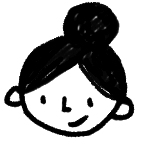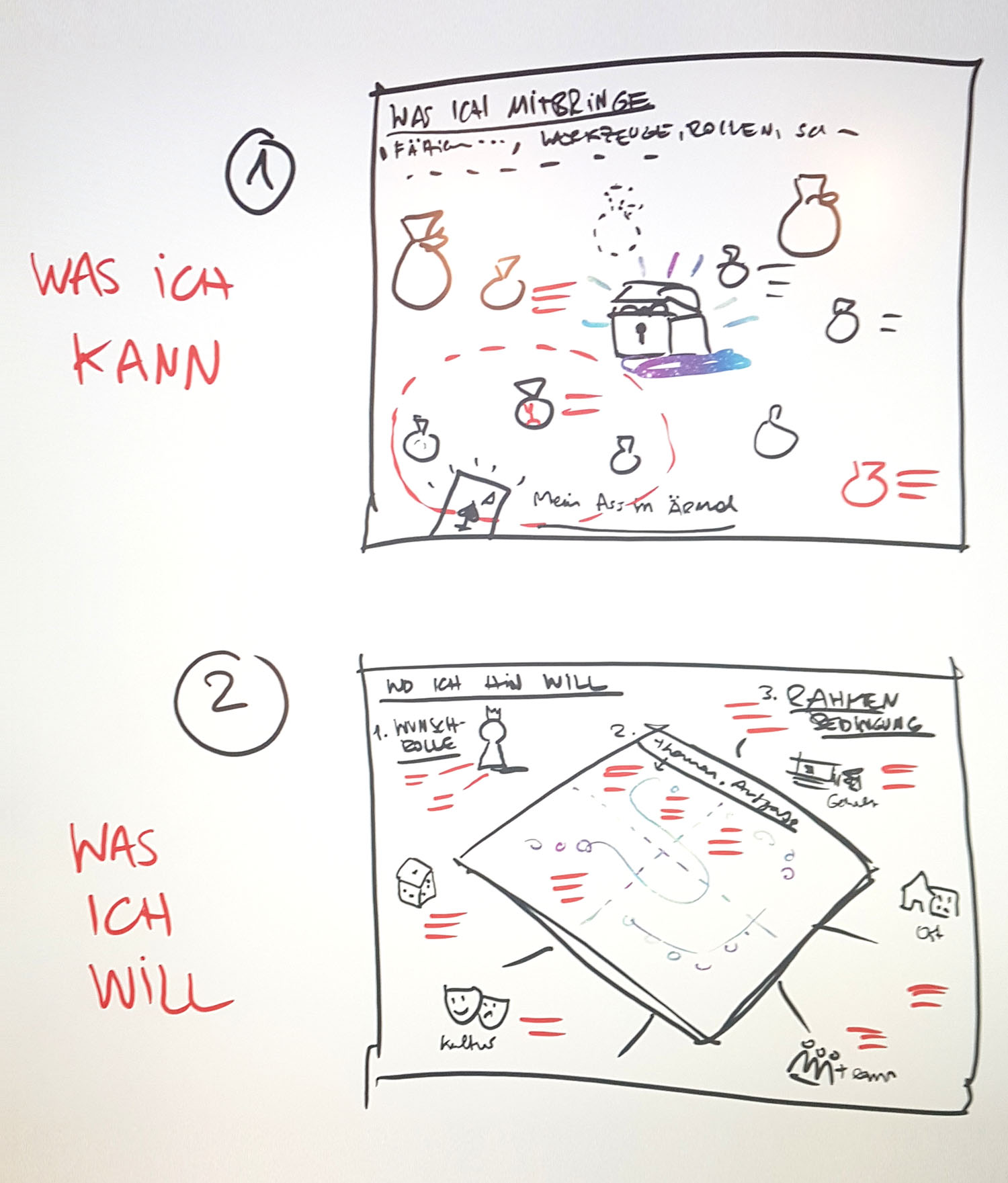I draw before I know
The other day, I attended the Vizthink Meetup here in Berlin (Thank you to Wiebke, Nadine and Ben for continuously organising this lovely event every 2 months). The topic was ‘Visual Templates’ and after a short introduction we split into groups to develop our own visual templates for a specific occasion.
I teamed up with a friend who wanted to create a template for participants of one of her workshops to fill out in preparation of attending. We worked as a group of 3 in front of a big fancy digital whiteboard.
Capturing the discussion from the very start. Photo by Nadine Roßa.
We started discussing what the context of the workshop is, who it's for, what the goal is, etc.
Usually, these kind of initial discussions just stay words floating in the room, but they already contain key information. So I grabbed the pen and started to sketch and write down each piece of information my friend gave us about her project.
I started drawing before I knew anything.
I didn't know what she was going to say. I didn't know which of the pieces of information would be relevant later. I didn't know the overall structure of how we would work this out (we didn't make a plan, but just started working). I didn't know if I understood and summarised the information 100% correctly while I was capturing. I didn't even know how this crazy digital whiteboard worked.
But I jumped in and started filling the canvas with a loose collection of fragments of information while everybody was talking.
Over the years of practicing and using visual thinking to bring clarity to problems I learned that 'drawing before I know’ is the key to the process. Through drawing and laying everything out there, I actually create the base material that allows me to generate understanding, find meaning, spot gaps and patterns, see how the system is structured.
Reviewing, restructuring, distilling, building on top, … Photo by Nadine Roßa.
Once it's out there, I can start shaping the material. I can prioritize, delete, add, rearrange and emphasize. I can point at parts and ask questions: Did I get this right? What does this actually mean? Is this in the right place? What else is connected to this?
I can slowly build a model of understanding in front of everybody's eyes, with everybody's input, out in the open, not hidden in my own head.
This requires that I start drawing before I know anything though. If I wait until I have it figured out through talking, I'll never start. For me, drawing is first and foremost a thinking tool and a presentation tool only in second place. It can be a bit scary to think out in the open in front of others. It can feel awkward to start drawing without knowing what is coming and what it exactly means. But once you get over this hurdle of fear, you’ll quickly reap the benefits.
Seeing the words
Super simple sketches – nothing fancy.
One very obvious benefit is that you can actually SEE what you talked about. Words are wonderful, but they are temporary and they disappear the moment after they were said. If you sketch out a conversation as it happens (very fundamentally, no fancy drawings, just quick little icons, keywords and some lines and arrows to connect things), you will probably be surprised at the amount of information you end up with on your whiteboard or your piece of paper at the end. Creating a physical trace of the words makes them actionable. You can point at a part and ask questions. You can go back to an idea and dive deeper. You can cut-up the parts and distribute them as tasks for different people in the room to take on.
And if most of what you do is have meetings and talk or listen to people, it can be hard to see what you achieved at the end of the day. Sketching out these conversations feels great, because you can actually see what happened and which steps you made will bring you closer to the final goal.
Notes from the initial discussion
The resulting template we designed
While I was sketching out our conversation at the Vizthink meet-up a lady came round to our group and stood at the side for a while watching us. She later came to me and told me (actually twice) that she was in awe (her words, not mine) of seeing me sketch like this. I’ve been thinking about her words since, trying to pinpoint what made the process so impressive to her.
Yes, I do sketch fast and my sketches are legible, but they are not ,beautiful' or fancy. They are pragmatic. But most importantly: they are THERE! The mere fact that I don't hesitate to start mapping out whatever is said without knowing what shape it will take in the end is the real superpower here. It's easier to build on something than to think from a blank slate. Jumping in and capturing before you know gives you the building blocks and the material to play and think with.
Don't wait!
I did eventually get the hang of the digital whiteboard … Thank you, Ben for capturing this video ;)
I encourage you to try this out in the next meeting or conversation you have and tell me what happened, how it felt and if it helped you. I'd love to hear your stories (either as a comment to this post or send me an email to evalotta [at] evalotta [dot] net).
I want to close this thought with a lovely thing that a client of mine once said to me after we had an intense conversation and mapping session. Her words were:
"The answer was there all the time, I just couldn't see it in this way before!"
Exactly that!






